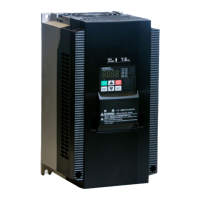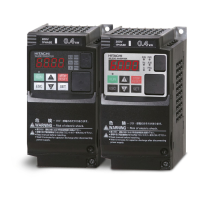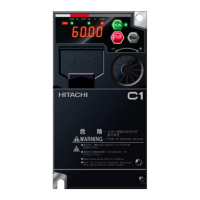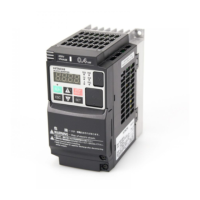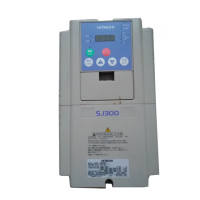46
Pulse Train Input Operation
The WJ200 inverter is capable of accepting pulse train input signals, which are used for
frequency command, process variable (feedback) for PID control, and simple positioning.
The dedicated terminal is called “EA” and “EB”. Terminal “EA” is a dedicated terminal, and
the terminal “EB” is an intelligent terminal, that has to be changed by a parameter setting.
For frequency command, 32kHz max.
Reference voltage: Common is [L]
Pulse train input B
(Set to )
27Vdc max.
For frequency command, 2kHz max.
Reference voltage: Common is [PLC]
(1) Frequency Command by pulse train input
When using this mode, you should set to . In this case the frequency is detected by
input-capture, and calculated based on the ratio of designated max. frequency (under
32kHz). Only an input terminal “EA” will be used in this case.
(2) Using for process variable of PID control
You can use the pulse train input for process variable (feedback) of PID control. In this
case you need to set to . Only “EA” input terminal is to be used.
(3) Simple positioning by pulse train input
This is to use the pulse train input like an encoder signal. You can select three types of
operation.

